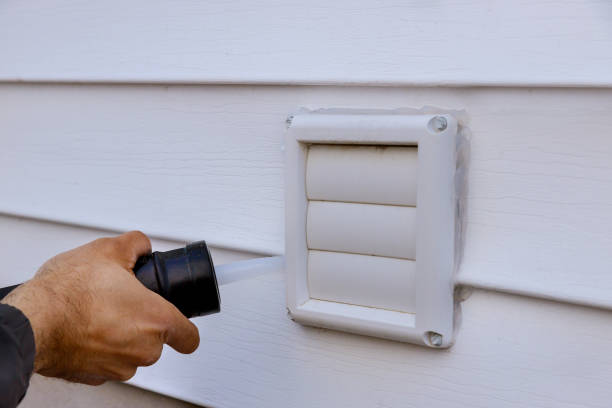When renovating your windows and doors or you’re installing siding, applying caulk is essential for sealing off cracks along their edges. Besides being great for sealing off cracks, applying caulk beautifies your windows and doors. However, dried caulk on your windows and door siding can easily appear messy. When caulk isn’t properly applied, you’re left with poor sealing of cracks which can, in turn, let in wind drafts and cause water damage in case of rain.
Removing caulk from your siding isn’t just about beautifying your effort in sealing off cracks. You also need to remove old and worn-out caulk so you can apply fresh caulk. Irrespective of your reason for removing caulk from your siding, you need the right tools and products for removing caulk. Removing caulk is generally stressful, but with these simple tips, you can get the job done:
Soften Excess Caulk With a Caulk Remover
Caulk remover products are designed to soften caulk for easy removal, so it’s much easier to use them to remove caulk from your siding. As a sealing agent, caulk gets hardened after being applied. To remove excess caulk without ruining the entire sealing, apply a few drops of a caulk remover product to the siding and wait for a little. You can easily shop for a caulk remover online or at a local store. There are also caulk remover tool kits available for sale online. However, if you can’t buy a caulk remover, you can try using vinegar, WD-40, or isopropyl alcohol. These alternatives can help in softening caulk for easy removal with a knife.
Cut With a Utility Knife
After softening the caulk on your siding, it’s time to use a sharp utility knife to slice around the edges of the siding neatly. This way, you’ll cut out the excess caulk and find it easy to strip it away. To make a neat cut, ensure that you use a sharp, thin-bladed utility knife.
Don’t aim for a single clean cut when cutting out the caulk. Applying too much pressure on the knife can break the thin blade or the caulk unevenly. So, what you should do is make neat, repeated cuts around the edges of the siding. Once this is done, you’ll be able to strip away the caulk neatly.
Scrape With a Putty Knife
Caulk removal is a tedious process, and it’s all thanks to the stubborn hardiness of caulk. Even with a caulk softening agent and a sharp utility knife, you’ll still need to scrape residual caulk. Scraping off residual caulk is important, especially when you’re trying to apply a fresh coat of caulk on your siding. Why? You can’t correctly seal cracks by coating old caulk with fresh caulk. Normally, you’d need to scrape and remove the old caulk totally before a new coating of caulk is applied. Irrespective of your goal, you can use a plastic or metal putty knife to scrape off residual caulk. Thanks to the unique blade design of a putty knife, it’s perfect for easily scraping troublesome caulk residue.
Clean up After Caulk Removal
Cleaning up your siding after caulk removal is important especially if you’re to add a fresh coat of caulk. It’s easy to think that the job is done after you’re done cutting away and scraping off the caulk on your siding. The last bit of removing caulk from your siding is to use a damp cloth to wipe the area you removed caulk from. A thorough wipe would take care of dust and other specks of caulk. You can add drops of isopropyl alcohol to the damp cloth to make cleaning easier.
Hire a Professional – Phoenix Siding
It’s great to be able to apply or remove caulk all by yourself, but sometimes you should leave it to the professionals. Why? The professionals are trained, and they have the right tools to get the job done with ease. What’s more, is that hiring a professional sometimes saves you money compared to doing it all by yourself.
At Phoenix Siding, we take pride in fixing all exterior installations. We can give your home a total makeover. Don’t believe it? Check out our projects and see for yourself. It’s been over 30 years in the industry, so no home renovation’s impossible with us.



